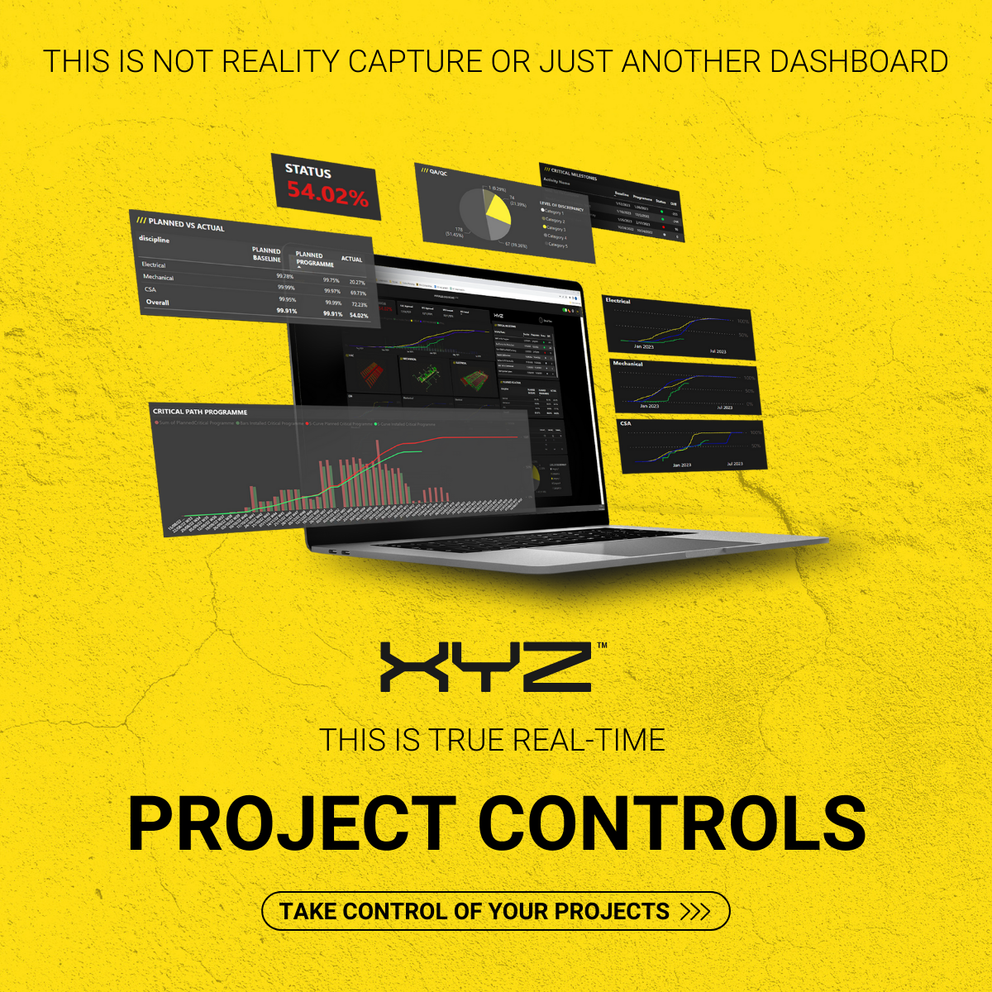-
Services
Services
Find out how we work with our clients and deliver value to construction projects from day one
-
Solutions
Solutions
Discover how all our solutions sync together to deliver construction's most powerful BIM platform to date
-
Built for
Built for
-
Industry
Industry
Understand how we support construction's biggest sectors, and hear from our clients who have experienced the power of XYZ
-
Resources
Resources
Get stuck into all our latest thought leadership, news, reports and industry leading content
-
Company
Company
Dive into what makes XYZ tick, unearth why construction is in our DNA and why we are world leaders in AR solutions

Insights
Cutting edge, not cutting corners

01 March 2022
John McLoughlin, Chartered Engineer and Associate Director at Cundall, writes about how XYZ Reality’s Engineering Grade Augmented Reality headset, the Atom™, is helping site teams unlock the full potential of hyperscale 3D models.
Traditionally the construction industry has been slow to adopt emerging technologies. New products and systems are often disregarded as expensive luxuries or irrelevant for external works, with site coordination being left to “sort onsite.”
However, this approach to coordination is riddled with problems. On occasion, a deviation from the design will be an entirely justified, or necessary decision; a practical solution to a challenge which was previously unknown or overlooked. More often than not, such deviations are mere mistakes, bearing costly consequences for subsequent installations, maintenance and asset performance.
At Cundall, as leaders in digital design, our bespoke 3D models are powerful tools that we want to continue to develop and implement across all our projects. We are always looking for the next innovation that can help us to deliver greater value, efficiency, insight, and accuracy. In order to achieve these goals, we have been investigating the application of augmented reality (AR) in our designs and the ways they are utilized by site teams.
We became aware of XYZ Reality in early 2020 after seeing the existing functionality of their software. Its enormous potential immediately caught our attention. As a test run, we applied their Engineering Grade AR™ solution to our external models on-site and we now use The Atom on our hyperscale data center projects.
Although AR has been sporadically used in construction for some time, it has always been restricted in its scope and purpose. At Cundall, we have tested various apps and programs over the years, none of which have been able to provide the detail or scale required to make them viable. With the arrival of the Atom, that’s all changed.
As a project engineer, I can say with conviction that having visibility of the works onsite, in real-time, with millimeter accuracy allows for a level of collaboration, site supervision and project control that has never been achievable before. Challenges can be addressed in the field immediately and accurate information is always available to the whole design team.
The value of having access to this real-time site data whilst sat in an office 2,000 miles away is now paramount to the delivery of all Cundall’s most complex projects. In addition, it plays a significant role in reducing our carbon footprint, since we don’t need to jet around the globe to conduct so many site inspections.
Our sector is only at the beginning of this journey into the future of AR. Over recent years our digital skillsets have developed rapidly allowing us to create complex 3D models at scale. Here at Cundall, these skills were an essential element in the development of the Construction Industry Council (CIC) in Hong Kong's Carbon Assessment Tool (CAT); an online platform for industry-wide stakeholders, including developers, designers, and contractors, to evaluate their project's carbon emission against the benchmark.
The possibilities to further develop and integrate AR into other services are endless. For example, in the future, digital models will have native integration with parametric modeling, carbon output, thermal and acoustic detailing.
As projects become increasingly complex and larger in scale, the adoption of AR technology will lead to better coordination, excellence, and capabilities to deliver projects with perfect precision.
I for one can’t wait to see where AR takes us next.
John McLoughlin, Associate Director at Cundall
John McLoughlin, Associate Director at Cundall, is a chartered engineer with over 20 years’ experience of design and management covering civil infrastructure projects in the residential, data center, aviation, renewables, energy and leisure sectors.







